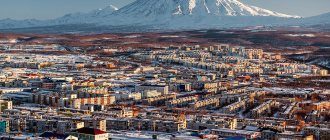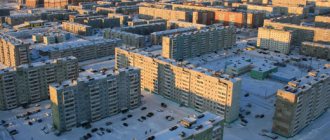Where is Barnaul located? What is the city famous for and how to get there? You will find answers to these and other questions by reading the article. In 1937, the Altai Territory was formed on the territory of the Russian Federation, where the city of Barnaul officially became the administrative center. Where is? The city is located on the banks of the Barnaulka River (the left tributary of the Ob River).
The article tells about the formation of this settlement and its attractions that attract the attention of guests and tourists interested in the history of Russia.
Weather in the city by month. Best time to travel
Like everywhere else on this hemisphere of the planet, in Barnaul the highest air temperature occurs in July, and the coldest in January. The minimum winter temperature drops to -20-21°C in January-February. But this is not necessarily always the case, winter can be relatively warm, only -9-12°C, for Russia this is considered a very mild winter climate.
Frosts can last until April, dropping to -1° at night, but during the day the weather is normal spring, the temperature rises to +10°. In May, the frosts disappear completely, and even at night the air temperature drops no lower than +6°. During the day, spring is already in full swing, +20° outside, approaching summer. It's starting to rain.
Barnaul is the administrative center of the Altai Territory with a population of 632,372 people
For this region, 7 days a month of rain is the maximum, and it falls just in May-June.
In the summer, from June to August, the weather is typical for the subtropics, summer weather, maximizing the temperature to 24-26°C. In September, the temperature drops sharply, the nights become cooler, up to +5 maximum, the first cold weather comes in October. Autumn rains begin, lasting until December.
It is better to visit Barnaul for tourism purposes in summer, in warm weather. In winter, cold air from the river lowers the temperature and humidity.
How to get there?
Where is Barnaul located? In what area is the city located and how to get there? Those who want to relax in the nature of the Altai Territory, see the sights of the regional center - the city of Barnaul, and communicate with the hospitable indigenous population can use air services. The flight from Moscow will take approximately 4 hours.
You can also get from Moscow by train “Moscow-Barnaul” from Kazansky station. Travel time is 50 hours.
There is also an intercity bus service “Moscow-Barnaul” to Barnaul. Travel time is no more than 65 hours.
Architectural sights of Barnaul
On the map of Russia, in the city of Barnaul, there are many attractions. They began to write about the city back in 1730, building it up, first with a library, then with a printing house and a local history museum, which became the very first in Siberia. Since then, the city has experienced many events, including a large-scale fire in 1917, the Civil War and other events, leaving behind various monuments and structures.
House of Polyakov and Yakovlev
In 1912, the house of two merchants was built, which became an architectural monument of the 20th century. After the October Revolution, the house became a public house and was used as a dormitory, and after the Second World War it again became a residential building. Since then, little has changed in the appearance of the original building, designed in the Art Nouveau style.
It is designed in such a way that it forms a corner, connecting Gorky and Korolenko streets.
Philharmonic building
On Polzunov Street, at the very end of the 19th century, the People's House was built on the site where a prison previously stood. The whole city raised money for its construction, merchants and patrons invested their funds, and in 2 years the multi-story building was built.
Art exhibitions and concerts were regularly held in the house; before the revolution, a school was even opened, and after it, the people's council met in the building. The house became a Philharmonic only in 1944. Changes were made to the building twice, the first time after a fire in 1954, the second time in 1960.
Since then, the Philharmonic has lost its original appearance, and with it its artistic qualities.
Currently, the concert hall houses a symphony orchestra, a Russian dance ensemble, a men's choir, a circus and a puppet theater. The Philharmonic Society actively holds concert evenings of various genres, from jazz and blues to academic organ music.
Shadrin's House
Another historical site of federal significance is located on Krasnoarmeyskaya Street. Initially, the merchant's house was residential, but was soon converted into a restaurant. Under the USSR, the building was somewhat changed from its original appearance by building a front door for the convenience of visitors. Since then, the wooden building has not changed its purpose and remains a restaurant to this day.
In 2022, a pizzeria and fast food restaurants were opened in the former Russian Tea.
Nosovich's house
This object is considered a historical monument, but this title is rather conditional, because the house moved from one place to another in 2006, essentially being rebuilt according to the drawings and photographs of the first house. The history of the architect's house begins in 1907 , when it was built by Nosovich, in which he lived until 1929, until his death.
Since then, until 2006, the building was in disrepair. The Soviet authorities finally decided to demolish the rags, but in 1988, young people, consisting of local artists and informal people, defended the right to the existence of a historical monument. The building was moved from Chernyshevsky Street to Anatoly Street.
At the moment the house is residential.
House of the head of the Altai mining district
In 1827, a private house was built in the center of Barnaul for the then head of the district. Since then, various wonderful people have lived in the house: the governor of Tomsk, the head of the plant, the naturalist Humboldt and others. During the October Revolution, the house was half burned down and was restored by the Bolsheviks in 1928.
The chief's house, during the reconstruction, was supplemented with internal changes necessary for the organization of a public institution. At the moment, descendants have continued the tradition in the building and donated the building to the needs of the local council of deputies.
The century-old building, in the style of Russian classicism, is an object of cultural heritage of Russia.
Three heroes
This apartment building is a recent construction, built in 2000. The original architectural project complemented the myriad of beautiful buildings built in Barnaul. In essence, this is luxury housing for several happy families occupying 4-room apartments, the price of which starts from 16 million rubles.
The local landmark also has the name “Dome”, this is due to the fact that the roof is made in such a way that it resembles 3 domes, or 3 helmets of 3 heroes. Tourists and locals often come to film each other in front of this significant house.
Popular message topics
- Magnet
Magnets are bodies that have their own field. The simplest magnet is the electron. A magnet has 2 poles + and -. Magnets will attract each other if they are of different poles. If they have the same poles, - Renaissance Era
The Renaissance chronologically covers the period from the 14th to the 16th centuries and represents a whole movement in literature, music, painting, and architecture. It replaced the Middle Ages and is radically different from it. - Military-industrial complex
The military-industrial complex includes scientific and testing organizations, as well as production enterprises that develop military and special equipment for the state army.
Theaters and museums of Barnaul
Barnaul on the map of Russia is famous not only for its architectural monuments, but also for its folk art. From the beginning of the 20th century, creative groups of various profiles began to gather in the city.
A brief overview of the sights of Barnaul:
Some showed performances in the name of the revolution, some staged puppet shows, and some collected fossils and paintings in order to, in the future, convey to the city and the entire Altai region the cultural heritage of the ancestors of the northerners, whose descendants continue their activities in local museums and theaters
Art Museum
In the mid-20th century, namely in 1959, the Soviet authorities ordered the construction of a museum to house the gallery of Peter Frolov , which he had been collecting since 1823. The paintings wandered from one place to another until they found their home in the Altai Museum.
The gallery has about 13,000 exhibitions , which include works by artists Kuprin, Malevich, Krymov, Rembrandt and others. Today, the museum has been restored and actively hosts excursions and art events.
Collections include the work of Russian artists of the 19th-21st centuries, as well as Orthodox paintings, sculptures, copper castings and more.
Museum of Local Lore
The building, which currently houses the local history museum of the Altai region, previously belonged to chemists and laboratory assistants of the mining industry. But, at the end of the Russian Empire, in 1913, the emperor ordered the chemists to vacate the building and transfer it to the museum.
Before this, the exhibitions collected by Pyotr Frolov and Friedrich Gebler were located in a different location and were closed to ordinary citizens. Samples included the work of Russian northerners and Native Americans, herbariums, models of mining machines and mechanisms, which had been collected in the collection since the 18th century.
At the moment, the museum is open and conducts excursions for children and adults on natural history, scientific conferences and creative evenings.
Museum "World of Stone"
The Altai region has long been famous for the presence of minerals. The very first industries were built to extract and process them, including one of the first silver smelters. After some time, the plant closed, and in its place a museum of fossils, found at the excavation site for many years, was opened.
The museum is now open to the public and features rocks, minerals and fossils from around the world , including North America, Europe and Oceania. A separate part of the museum is reserved for storing and displaying Altai fossils. The organizers also organize regional and interregional excursions for children and adults.
Altai Regional Drama Theater
The Drama Theater was built in 1921 in the very center of Barnaul according to the design of the Central Institute. In 1991, the city administration decided to name the theater in honor of the film director, Lenin Prize winner Vasily Shukshin. In 2007, the inside of the building was reconstructed and updated to the latest standards.
The theater includes a main auditorium with 711 seats and an experimental stage with 182 seats. The repertoire today has an extensive program, showing dramas, comedies and plays for 12+, 16+ and 18+.
Altai Youth Theater
The Theater for Young Spectators was created by amateurs from several people in 1918. After wandering around parks and apartments for 40 years, the theater group was given the first premises in the Altai Drama Theatre. And only in 1999 the troupe finally settled in the current building of the House of Culture on October Square, which previously belonged to the textile industry organization.
The artists' repertoire included plays for children and adults, mostly of a Soviet, revolutionary nature. Over time, the poster was modernized, and now the artists’ repertoire includes productions based on the books of A. Ostrovsky, V. Sigarev, A. Chekhov, A. Arbuzov, V. Gauf, I. Goncharov and many others.
Theater "Fairy Tale"
The first puppet theater troupe was formed in 1938. The puppeteers did not have their own building, wandering here and there. During front-line times, artists traveled, giving performances on military topics. The theater first received a building in 1963 in the Philharmonic, then on Pushkin Street, and then on Lenin Avenue, which belonged to the Rodina cinema.
Now the theater shows performances for the youngest children from 2 years old and for older children, 6-8 years old. The repertoire includes classics (Little Red Riding Hood, Alice in Wonderland) and modern productions (The Four Seasons, The Gosling, The Hare's Hut).
The theater also opened a school for young puppeteers, where teachers teach children aged 5-7 years old the art of puppet theater.
Economy
The capital of the Altai Territory, its economic center in Soviet times was a fairly large industrial city. After the collapse of the USSR, many industrial enterprises ceased to exist, and the city began a slow decline. Today, the city has several large enterprises in the chemical, engineering and metalworking industries. There are also many successful agricultural processing enterprises in Barnaul. This is not surprising, because the Altai Territory is an agricultural region. But still, most of the population of Barnaul is engaged in trade. The city has many shopping centers and various commercial enterprises. Important for the city's economy is its convenient location at the intersection of some important transport routes. Barnaul has its own airport named after. G. Titov, a branch of the West Siberian Railway passes through the city.
Monuments and monuments of Barnaul
Barnaul on the map of Russia, which is the center of the Altai region, has become the site of the construction of monuments to history and its figures, which are important for the country and Siberians in particular. The monuments bear not only a tribute to historical dates, but also the creative component of the city, in which both workers and artists live, who also have their own heroes.
When visiting Barnaul, you will notice that some monuments have a hidden meaning, which can only be understood by learning the history of the city itself.
Demidov pillar
Another work by Pyotr Frolov, who donated a gallery of paintings and a collection of Altai fossils to the city. This time, the engineer decided to give the city a granite obelisk, 14 m high, in honor of the 100th anniversary of mining in Altai. The opening of the memorial sculpture took place in 1839 , 14 years after the installation of the first stone.
The cone-shaped obelisk consists of 12 blocks and is located on Demidovskaya Square. In 1918, the Bolsheviks wanted to move the monument to another place, erasing its history and dedicating the building to the achievements of the revolution. But the pillar was so strong that it was impossible to disassemble and engrave anything on it.
Monument to V.M. Shukshin
The monument dedicated to the artist Vasily Shukshin was donated to the city in 1989 , on the 60th anniversary of the film director. He did not live to see this event, having died 14 years before this event. The monument depicts a thoughtful Shukshin sitting on a stone.
The attraction is located in the Leninsky district of the city and every year attracts fans of the artist’s work.
Monument to IDPs
In 2012, a significant artistic monument to the first peasants who moved to the Altai region and were engaged in agriculture was erected on Kalinin Avenue. It was these people who raised the city, providing provisions to all the city's residents.
The monument depicts an old peasant sowing and a boy next to him against a background of sun, clouds and trees.
Zero kilometer
Stone cutters from Barnaul presented their city with an original and simple monument, marking the beginning of all roads in the village. The opening took place in 2003 on Soviet Square. The structure consists of 8 blocks on which there is a stone vase. On the sidewalk there is a drawing in the form of a circle with 12 zodiac signs.
In essence, the monument is a sundial, which can be used to accurately determine the time on a sunny day.
Victory Monument
The monument, commemorating the victory of the Soviet people over fascism, was erected in honor of the 20th anniversary of the victory in 1975 on the square of the same name. This 24-meter-tall structure is a stela on which, on one side, soldiers and the years of the beginning and end of the war are depicted, and on the other, ordinary people who lived and supported the city in difficult times.
Demidovskaya Square
The walking tourist excursion begins with the main attraction of the city - Demidov Square. It is located in the central part
In 1818, the managers of the Kolyvan-Voskresensky factories, Pyotr Frolov, proposed creating a square in Barnaul where an obelisk could be erected in honor of the 100th anniversary of the start of mining in the Altai region.
Initially the square was called Konyushennaya. Then it changed its name several times.
From 1992 to the present time, the main square of Barnaul is called Demidovskaya in honor of the founder of the city, Akinfey Demidov. Now it looks about the same as it did in past centuries.
Tourists can explore the buildings of the mountain hospital, mining school and home for the disabled. All these buildings date back to different years of the 19th century and have retained their original appearance.
Temples of Barnaul
Barnaul has its own deep Orthodox history. During the Russian Empire, the city was rich in churches dedicated to various saints. With the advent of communism, most of them were reformatted as economic institutions.
After perestroika, thanks to the assistance of Alexy II, churches began to return to the fold of the church. Now many of them have accumulated a rich history, sections of which are sometimes very dark and bloody. Ancient religious buildings adorn Barnaul and are objects of cultural heritage of the Russian Federation.
Intercession Cathedral
The four-altar church, which is the main church of the local diocese, was founded on the site of an old church that functioned at the beginning of the 19th century. The old wooden building was destroyed and a cathedral was erected in its place in 1898.
After the revolution, during the persecution of Christians, the temple was given over to a warehouse, and in 1943 it was reopened by the new government.
At that time, only 1 temple functioned in those places, for which it received the title of cathedral. Today, four saints come to the temple to pray at once: Seraphim of Sarov, Panteleimon the Healer, Alexander Nevsky and the Intercession of the Most Holy Theotokos.
St. Nicholas Church
The Church of St. Nicholas the Wonderworker on Moskovsky Prospekt was opened in 1906 and, initially, was a military institution where soldiers of the Russian Empire took the oath and held church events. In the 30s, the communists reformatted the temple into a military school and services stopped for 60 long years.
After the collapse of the USSR, the temple returned to its purpose, was completely restored and, today, belongs to the Russian Orthodox Church.
Znamenskaya Church
The foundation of the modern church in honor of Saints Zechariah and Elizabeth was laid in the mid-18th century. It was a wooden church, which after 25 years was completely dilapidated. After much preparation and plans for reconstruction, exactly 100 years later, the Znamensky Church was erected.
During the years of building communism, the church served for public needs , and only in 1992 was returned to the possession of the Russian Orthodox Church. The building was expanded many times, a convent and a font were opened and new bells were installed.
Name
There are several theories about the origin of the name "Barnaul". The main version suggests that the city was named after the Barnaulka River. There are two main theories about the translation of the river's name. The first suggests that the name “Barnaulke” is translated from Ket as “wolf river”. And indeed, there used to be many wolves along its banks. In the second version, the name of the river is translated from Teleut as “muddy river.”
Where to go with children in Barnaul
Coming to the glorious city of Barnaul with children, every parent wants to introduce their child to history by arranging for him an interesting excursion that will not be tiresome. To do this, there are many interesting places where you can take the new generation.
In the local history museum, educational programs for children and a competition for the best postcard are planned for January 2022 . The child will be able to take part in the Creativity Laboratory and attend a master class on creating a Christmas angel. Events take place on the street. Polzunova 39.
The city's theaters also have a program designed for both the youngest spectators, 2-year-olds, and older children. At the Skazka puppet theater in January 2022, young spectators will be able to see the performances “Morozko”, “Snowman-Postman”, “Emelya’s New Year’s Journey”, “The Three Little Pigs”, “Mashenka and the Bear” and others.
The performances are designed for children aged 2-4 years.
The local Minotaur Labyrinth , which hosts various quests, attractions and horror labyrinths, is very popular among teenagers. The price of a ticket to different rooms is from 100 to 400 rubles. The recently popular excursion “With Eyes Closed” for children 10-15 years old offers an individual quest to identify hidden abilities.
The child learns to explore the world by touch, discovering previously unknown capabilities of his brain. The price of the excursion is 1500 rubles.
The city constantly hosts excursions to local attractions, to the Altai knitting factory, to the shoe and terry products factory, at a price of 250 rubles. per person. A child can watch how halva is made at a halva factory; the ticket price is 300 rubles. You can also look at animals, namely ostriches for 200 rubles. or visit the rare bird nursery for 750 rubles.
Things to do
The city is not only architecture and monuments, but also parks and squares. In Barnaul, the beautiful Ob embankment has recently been decorated, along which you can take pleasant walks. The city is located on the border with a unique ribbon forest, where you can also take pleasant walks. You can also spend a few pleasant days in sanatoriums and holiday homes. The Altai region is famous for its beautiful nature and there are several excellent places to relax right within the city limits. You can also go for a walk to the arboretum, which is especially beautiful in the spring, when many varieties of lilac, apple and cherry trees bloom.
Route for exploring the city on your own for 1-2 days
For those who like to walk around the city alone or in the company of friends, but do not want to pay money for excursions and walk along the beaten path, we can offer several interesting places in Barnaul that you can see just while walking around the city.
Barnaul on the map of Russia looks like a fairly large city, containing entertainment for every taste.
Natural science lovers can visit:
- museum of entertaining sciences “How-so?” on Lenin Ave., 147;
- Barnaul Planetarium on Sibirsky Ave., 38;
- Museum "World of Time" on the street. Matrosova, 12;
- Museum "World of Stone" on the street. Polzunova, 39.
For creative people, the city has the following interesting places in stock:
- Altai Youth Theater on Kalinina Ave., 2;
- Altai Theater of Musical Comedy on Komsomolsky Ave., 108;
- art gallery "Turina Gora" on the street. Dmitrova, 85a;
- monument to Viktor Tsoi on Socialist Ave., 126;
- Gallery of Contemporary Art "Prospect" on Lenin Ave., 39.
For lovers of active recreation, water activities, restaurants and zoos, the city’s arsenal includes:
- Zoo "Ostrich Ranch" on the street. Sosnovaya, 27;
- water park in the shopping center "Europe";
- amusement park "Harlekino" on the street. Georgiy Isakov, 149a;
- amusement park "Solar Wind" on Lenin Ave., 152 b;
- gaming complex "Barnaul Fortress" on Socialist Ave., 97.
We invite connoisseurs of military art to visit:
- monument to the legendary T-34 at Stroiteley Ave., 18;
- military history department in the Museum of Local Lore at Komsomolsky Ave., 72b.
Administrative division
The banks of Barnaulka are considered to be the place from which the city began to grow. The Ob River in Barnaul became a natural barrier that the city did not cross. Therefore, the entire settlement was located on the left bank of the large river. The city is divided into 5 administrative districts: Central, Zheleznodorozhny, Oktyabrsky, Leninsky and Industrial. The city also includes 24 settlements: the villages of Yuzhny, Borzovaya Zaimka, etc. The local population of Barnaul also divides the city according to the traditional names of settlements or places that are included within the city. So, here you can hear such toponyms as Aviator, Solnechnaya Polyana, VRZ, Sulima, Cheryomushki.
Hotels in the city
In Barnaul there is a huge variety of hotels , hotels, hostels, cottages and overnight accommodations of different price categories. Despite the differences in price, each of the establishments meets all the sanitary minimum requirements; the only difference is the availability of swimming pools, Wi-Fi, massage rooms and other bonuses.
The table shows prices per room per night:
| Hotel | Price per room | Address | Telephone |
| "Siberia Inn" | 500 rub. | Kosmonavtov Ave., 8/2 | 8 |
| "Victoria" | 640 rub. | st. Tikhonova, 40a | 8 |
| "24 hours" | 856 rub. | st. Pionerov, 9 | 8 |
| "Tourist" | 1870 rub. | Krasnoarmeysky Ave., 72 | 8 |
| "Alexander House-Sport" | 2600 rub. | st. Privokzalnaya, 35-a | 8 |
| "Snail" | 3892 rub. | st. Korolenko, 60 | 8 |
| "Zarechye" | 5000 rub. | Pravoberezhny tract | 8 |
Population
At the end of 2022, 632 thousand people lived in Barnaul. Over the past couple of years, the number of residents of Barnaul has been decreasing. This can be explained by migration and natural decline. The capital of the Altai Territory is a fairly compact city, its area is 322 km². The population density is 1955 people/km². By gender, the groups of city residents are 55% women, 45% men. In terms of ethnic composition, the city differs little from many other settlements in the country. 95% of Russians live here, other nations are represented by groups of less than 1%.
Where to eat in Barnaul: cafes and restaurants
The Altai capital is rich in a variety of cuisines with different pricing policies. In every restaurant or cafe you can find exquisite, signature dishes, as well as homemade, traditional cuisine familiar to every Russian resident. The table shows prices for the most popular dishes and drinks.
Catering establishments are located in different parts of the city.
| Institution | Address | Approximate prices |
| "Ieroglyph" (sushi bar) | Socialist Ave., 109 |
|
| Gold of Packard (restaurant) | st. Malakhova, 94b |
|
| Velvet (restaurant) | Lenin Ave., 80 |
|
| "Pozharka" (grill bar) | Zmeinogorsky truck, 71v |
|
| "Beer restaurant" (restaurant) | st. Vzletnaya, 57 |
|
| “Gastronomica” (cafe-restaurant) | st. Anton Petrova, 176b |
|
| "Ku-Ku" (restaurant complex) | Kalinina Ave., 1a |
|
On the map of Russia there are many large and small cities with a rich history, always ready to receive tourists from Russia or abroad. Barnaul is one of these cities, with familiar and at the same time original architecture, delicious cuisine and cozy hotels.
Coming to the center of Altai, you pay attention to how local residents love their city and are sensitive to its condition and development. Every visitor will experience how harmoniously the centuries-old history of the city, captured in architectural monuments, and modern hospitality are combined.
Article design: E. Chaikina
Bankruptcies of former mayors
Having worked as a mayor, the man, understandably, made many connections. But connections did not save them from economic turmoil. The most high-profile bankruptcy stories in Barnaul were the cases of the trading houses “I. K. Platonov" and "Sukhov and Sons". These are all companies of former mayors.
Platonov was twice elected mayor. Sukhov was mayor once. Both worked as City Duma deputies of many convocations and had diversified businesses. Sukhov, for example, owned trade and, in addition, shoe production.
The trading house Sukhov and Sons was declared insolvent in 1911. Trading House "Platonov" - in 1912. It is known that Platonov’s bankruptcy was accompanied by scandals. The entrepreneur had a strong argument with his creditor, Sibtorgbank: the bank allegedly seized his famous power plant. The bank, of course, argued that the station rightfully belonged to it.
Trading house "Sukhov and Sons" in Barnaul. Subsequently a bakery. Etc. Lenina, 3.
retro. moi-barnaul.ru











